
Two Crazy Cats
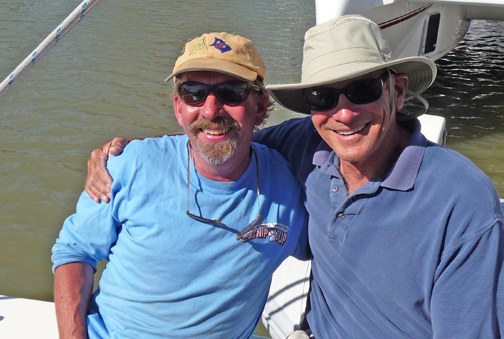
© Latitude 38 Media, LLC
The two men in the photo above — Arjan Bok of San Francisco and Jim Milski of Colorado and the Bay Area — are crazy. We know they are crazy because both not only built their own boats, but the boats are both rather large catamarans.
Bok built RotKat, a Lidgard 43, from scratch in San Francisco after selling his much-loved Newport 33 Tiger Beetle. Milski completed his Schionning 48 Sea Level from kit form in Vallejo. Both claim that having been on or sailed on Profligate was a partial reason for their going a little nuts — but we refuse to accept any responsibility.
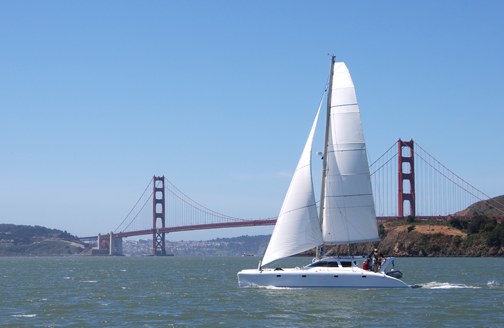
©2008 Latitude 38 Media, LLC
We had our first chance to see the two cats last weekend during the Catnip Cup to Vallejo, a light air event that attracted about a dozen multihulls. The thing that struck us is that both RotKat and Sea Level look as professionally done as many production cats. ‘Good enough’ just wasn’t good enough for either Bok or Milski. But that also meant about a year of just sanding was required for each boat!
Both builders eschewed typical gingerbread, so their cats are light and therefore will go like bats out of hell when there’s a breeze. As reported recently, Bok’s RotKat hit 19.5 knots off Alcatraz. It didn’t hurt that she’s equipped with a rotating carbon mast that he built for 1/10th the cost of a commercially built one. Well, 1/10th of the cost not counting the labor. Alas, Bok reports there was a tremendous amount of labor involved in that project.
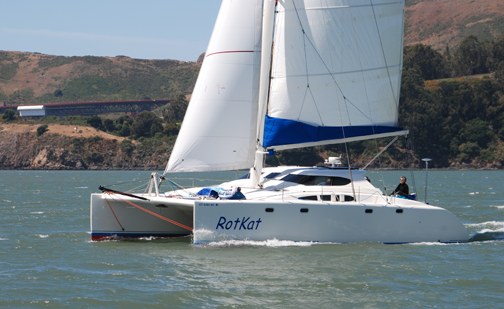
©2008 Latitude 38 Media, LLC
When you build your own cat, you develop a certain confidence in your instincts. So when Bok needed to remove his saildrive, he decided to try something that sounded insane, but if it worked, would be much less expensive than what’s commonly considered to be a mandatory — and expensive — haulout. First, he dove on the saildrive and removed the prop. Second, he disconnected the engine from the saildrive. Third, he raised the engine as high as it would go in the engine compartment. Fourth — and this is what sounds really nutty, even for a guy who would build his own cat — he unbolted the saildrive and lifted it up through the hull. Yes, the water came pouring in. But because a cat floats so high, and because the engine compartment is so small, the water only came to 16 inches high in the engine room. After replacing the bad saildrive seals, Bok reversed the removal process, being careful to pump out all the water before reconnecting the engine to the saildrive. He says it only took him an hour to take the saildrive out, and another hour to put it back in.
Warning! Don’t even think of trying this on a monohull, because you’ll sink your boat.
With the late arrival of Kevin Millet’s family — which includes wife Marcie and mischievous 15-year-old daughter Ayla — aboard their Hawaii-based self-designed 54-ft Kalewa, it meant the Catnip Cup had three homebuilt cats. Kevin built the boat as a 48-footer in Hawaii a few years ago, and spent much of the last winter adding six feet at the Napa Valley boatyard.
Five Sailors Rescued, One Perishes
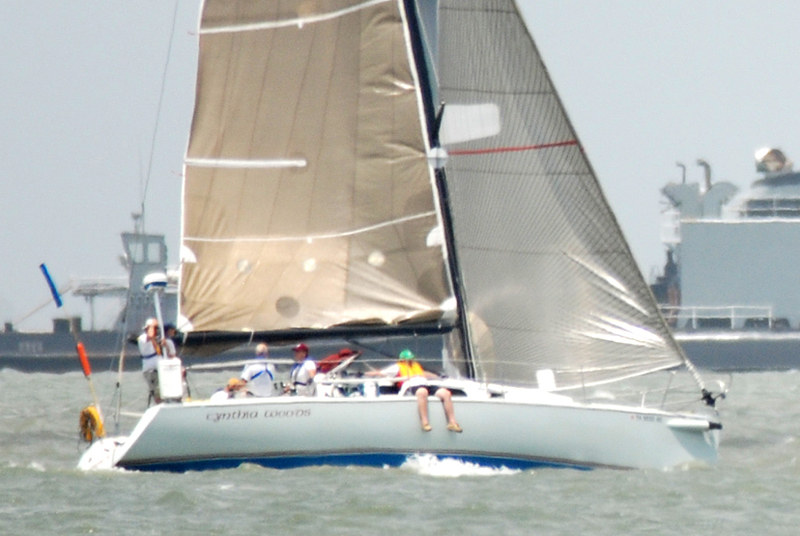
© Latitude 38 Media, LLC
The Regata de Amigos, a 610-mile race from Galveston, Texas, to Veracruz, Mexico, turned deadly Friday night for Texas A&M Univerity’s entry, Cynthia Woods, just hours after the race’s 2 p.m. start. The Cape Fear 38, crewed by four students and two safety officers, was under sail around 11:45 p.m., with the three off-watch crewmembers below, when water started pouring into the boat. The off-watch safety officer, Roger Stone, 53, woke the two students and shoved them out the companionway as the boat started to turn turtle. Stone never made it out.
The five crew were thrown in the water where they strapped themselves together and stayed afloat with just four lifevests. Within minutes, they had drifted far from their stricken vessel and began paddling toward an oil rig in the distance, keeping in a tight formation with the fifth lifevestless crewmember in the middle.
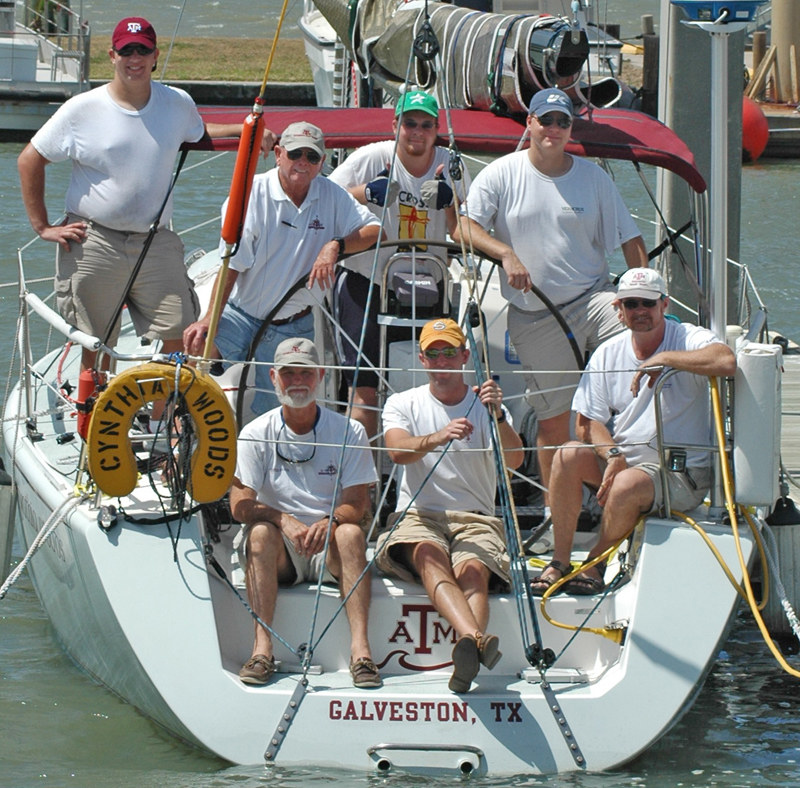
© Latitude 38 Media, LLC
When Cynthia Woods failed to check in at 8 a.m. as scheduled, A&M reported the boat missing to the Coast Guard. A little after 5 p.m. on Saturday, the capsized boat was found with its keel missing, and a search for the crew began. It was another nine hours before they were found, when a helo spotted the faint glimmer of security officer Steve Conway’s flashlight.
It’s not known why the keel parted from the boat but early speculation is that Cynthia Woods collided with a submerged object, ripping the keel off. The survivors report that the boat capsized within a minute, making it impossible to grab any other lifesaving gear.
Delta Ditch Walk
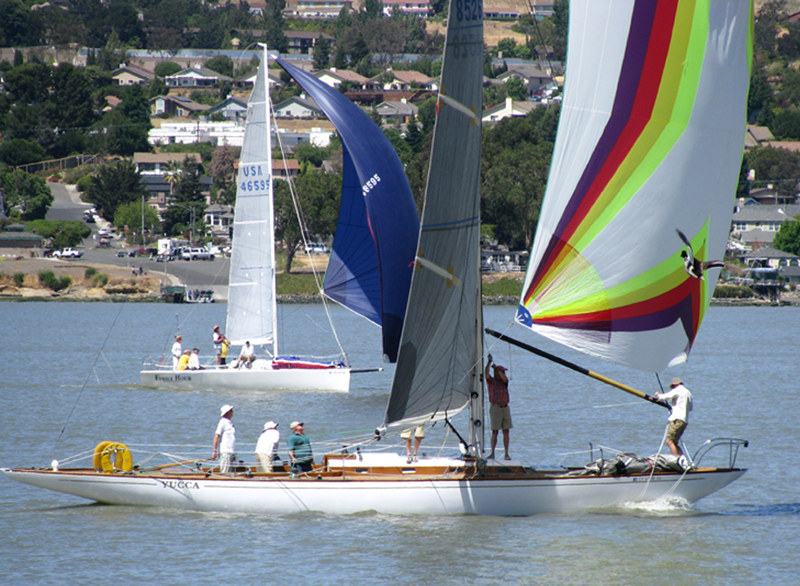
Despite the collective prayers from sailors and organizers that the National Weather Service’s wind forecast for Saturday’s Delta Ditch Run was wrong, it turned out to be right on. With an occasional puff to about 12-knots representing the high for the day, the light air meant finish times of after-nightfall for the bulk of the 136 entrants. What the breeze lacked in strength, it made up for in consistency over the 68-mile course, as it stuck around long enough to push the stragglers to Stockton.
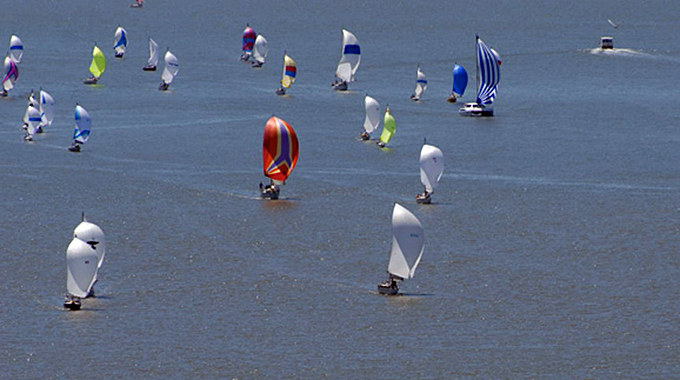
In addition to the usual smattering of groundings, Ed Matson’s Laser 28 Mega Hurts lost its rig on channel marker 19 and a Moore 24 was reported to have done the same. One of the groundings resulted in hospital visit for Bob George, who was standing up at the the helm of the Bilafer family’s Henderson 30 Family Hour when they hit, George’s wife Candy said. Only about a mile from the club, they ran aground with enough force to send George for a rushed meeting with the cockpit sole. Despite protesting that he was fine, the crew convinced him to go get checked out. Fourteen staples later, he was released from the hospital and is doing fine.
At the Stockton Sailing Club, the late-starting party was still well-attended, and the volunteers manning the hoist were still pulling boats like clockwork when we bailed after midnight. Judging by the line of trucks and empty trailers waiting to pull up, those volunteers were there a lot later than that, keeping things orderly and moving. As of this writing, results had yet to be posted on the Stockton Sailing Club’s web site, so we’ll refrain from calling any winners at this point. Look in the July issue of Latitude 38 for more on the Ditch Run.
‘Tall Ship Girls’ Learn Life Lessons

Friday was a very special day in the lives of a dozen Bay Area high school girls. Not only did they graduate from a life-altering 18-week maritime program, but they got to row and sail the wooden skiff that they built with their own hands in recent weeks.
The program, called Tall Ship Semester for Girls, draws girls with little or no maritime experience from high schools all over the greater Bay Area, and is administered by staff at SF Maritime Park. Each fall and spring 12 girls are selected from a broad pool of applicants to participate in the three-phase program which includes six weeks of classroom instruction and small boat sailing lessons, a six-week voyage on a Caribbean-based tall ship, and a six-week internship at the Hyde Street historical park. With normal school disciplines woven into the curriculum, students receive full school credit for their efforts.


While learning to use hand tools and trim sails may prove to be skills these girls will use throughout their lives, the graduates tell us the ‘life lessons’ they learned have made an even greater impact on their outlook: "Before all this," said one, "I didn’t know what I was going to do with my life. Now I realize the world is full of possibilities." Look for more on this program in the July edition of Latitude 38, and see the website for program specifics and application info.
